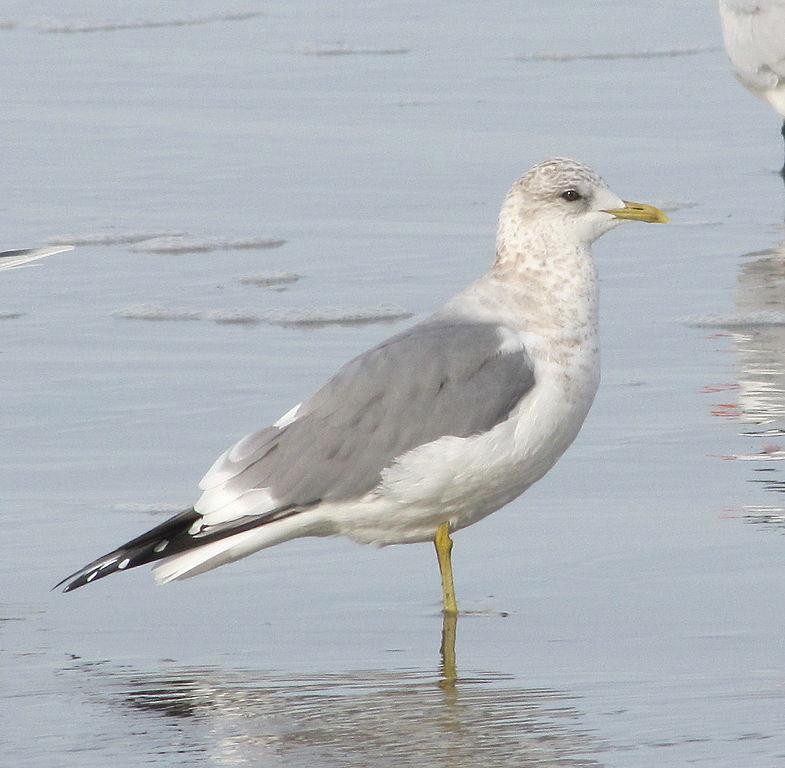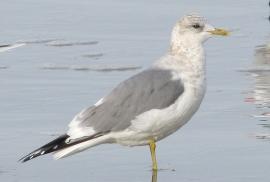Guide to Boreal Birds
Overview
This small gull is as versatile a feeder as the larger species of gulls, but its egg-stealing in seabird colonies is less destructive. It often catches insects, sometimes from swarms in the air. In winter the species is entirely restricted to the Pacific Coast of North America from southern Alaska to the northern coastline of Mexico's Baja California. Birds depart southern portion of wintering range by April and May and return to wintering areas from August through October. Within the boreal portion of its range the Mew Gull breeds in freshwater habitats, often on small islands or hummocks.
Description
16-18" (41-46 cm). White with gray mantle, black wing tips, and greenish-yellow legs. Bill small compared to those of larger gulls and in adults unmarked greenish-yellow. Juvenile similar to young Ring-billed Gull, but generally darker with less crisply marked tail band.
Voice
A high mewing kee-yer.
Nesting
2 or 3 olive eggs, with brown or black blotches and scrawls, in a grass nest placed on a beach or riverbank, or in a treetop, on a stump, or on pilings. Almost always nests in colonies, often among other gulls.
Habitat
Nests along rivers and lakeshores as well as seacoasts.
Range/Migration
Breeds from Alaska east to central Mackenzie and south to northern Saskatchewan and along coast to southern British Columbia. Winters on Pacific Coast. Also along boreal forest belt of Eurasia.



